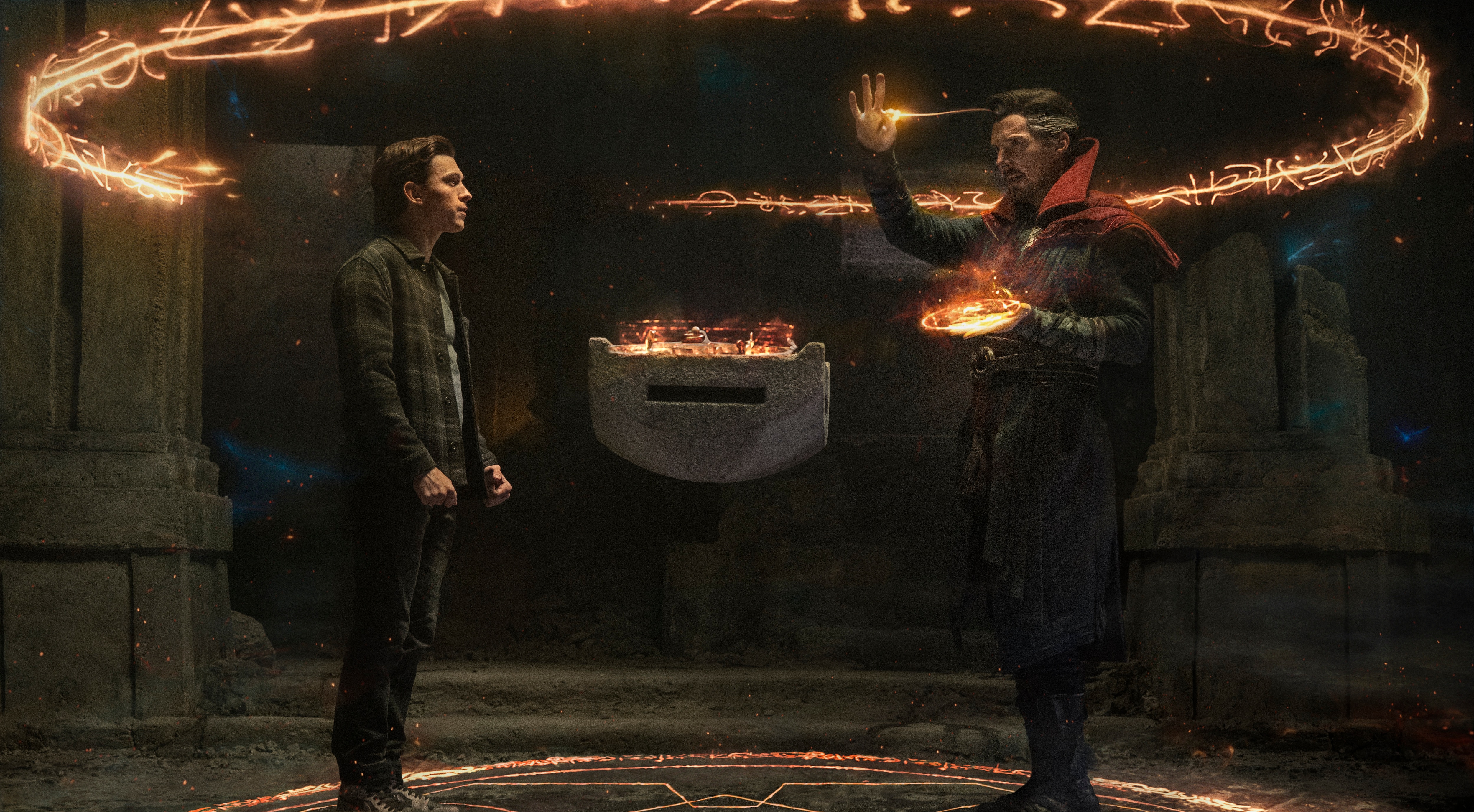Create a free profile to get unlimited access to exclusive videos, sweepstakes, and more!
'Spider-Man: No Way Home' writers explain how film's fresh slate ending 'evolved' during filming
Even by superhero movie standards, No Way Home has a lot of moving parts.

In the weeks before the release of Spider-Man: No Way Home, star Tom Holland made headlines when he noted that he suggested significant changes to the film's third act right in the middle of shooting, because something about the script wasn't quite working. At the time, it was enough to make some fans suspect that the film went into production without a real ending figured out, something previous action blockbusters have either been accused of or eventually admitted. According to No Way Home writers Erik Sommers and Chris McKenna, though, that's quite an exaggeration. There was always an ending in place. It was just a matter of refining everything as much as possible, for as long as possible.
“There always was a third act, but it was always being worked on," Sommers said in a new interview with The Wrap. "That’s the great thing about working with this team of people, Sony, Marvel, Amy Pascal and Jon Watts, it’s never just, ‘OK, well, let’s just rest on our laurels. That’s fine.’ It’s like, ‘Let’s keep trying to make this as good as possible, let’s keep working on it as long as we can to make it as good as we can.' We were always working on it, and all the way up to the day we’re shooting it, we’re working on it. I’m just so glad it turned out the way it did.”
So, what changed in the process of constantly working on that ending? Two key elements, according to the writers.
**SPOILER WARNING! Spoilers for Spider-Man: No Way Home ahead.**
The ending of No Way Home has, as anyone who's watched it knows very well, a lot of moving parts. It's not just one hero up against one villain, or even one hero up against three villains. It's three heroes and two of their friends up against five different villains with one major MacGuffin and a massive setpiece to work around, and all that's before Doctor Strange shows up to help wrap up the fight. In crafting the final showdown at the Statue of Liberty, Sommers and McKenna knew that it was vital to emphasize the nature of the magic they'd be using to tie up No Way Home's central dilemma.
On the one hand, they had the magical box in which Doctor Strange had contained his original spell, and the film spent a lot of time establishing that this box would send everyone back to their home dimensions...only to blow the box up with a carefully placed pumpkin bomb at the last moment. With that done, they had to re-emphasize the stakes of the magic in the story, namely that Doctor Strange had no choice but to erase everyone's memory of Peter Parker in order to send everyone back home, a decision that would wreck the MCU Spider-Man's entire personal life. Making sure the audience understood those stakes from moment to moment was a process of constant refinement.
“I think it was November of last year [2020], it was Erik and I working on this document while we’re doing daily pages, while we’re shooting, really trying to hone what does the spell do, what does the box do? How do we clarify these things?” McKenna said. “Because they are these, they make fun of the term goobers in Into the Spider-Verse. But it really is, it’s like how many goobers can you put in this movie that also has all these characters?”
In Into the Spider-Verse, a "goober" is a device a hero can use to nullify the plans of various villains, and by introducing not one but two magical elements into the film's ending, McKenna and Sommers realized they had to give each goober a reason for existing, and emotional stakes to go with it. That sense of establishing stakes is what eventually led the writers to understand the choice Peter would make to let Strange go ahead with the final spell, erasing not just his Spider-Man identity from everyone's memory, but his entire identity from the minds of his friends.
“We were really trying to refine those goobers and it was, at a certain point, the idea that his identity would get erased was baked in, but it was for a different reason," McKenna said. "Then it became this idea that, that was how we would do it to stop this influx of people, but then when would he do it and when would he know it was a lifetime sacrifice?”
According to McKenna, the idea of making Peter's choice a "lifetime sacrifice," at least for now, also emerged late in the production process, as the writers crafted what would eventually be the final scene between Peter, MJ, and Ned, when the latter two characters have no idea who he is.
“That changed too and that then became the donut shop scene where he thought he was really going to walk into that scene and reveal who he was and get these two loved ones back into his life, and then he makes the last hard decision of his life in that moment,” McKenna said. “That all evolved while we were in production, I think that was all taking shape I would say November, December of last year.”
So yes, the ending of Spider-Man: No Way Home did change during production, but as far as we can tell, it changed for the better.


























